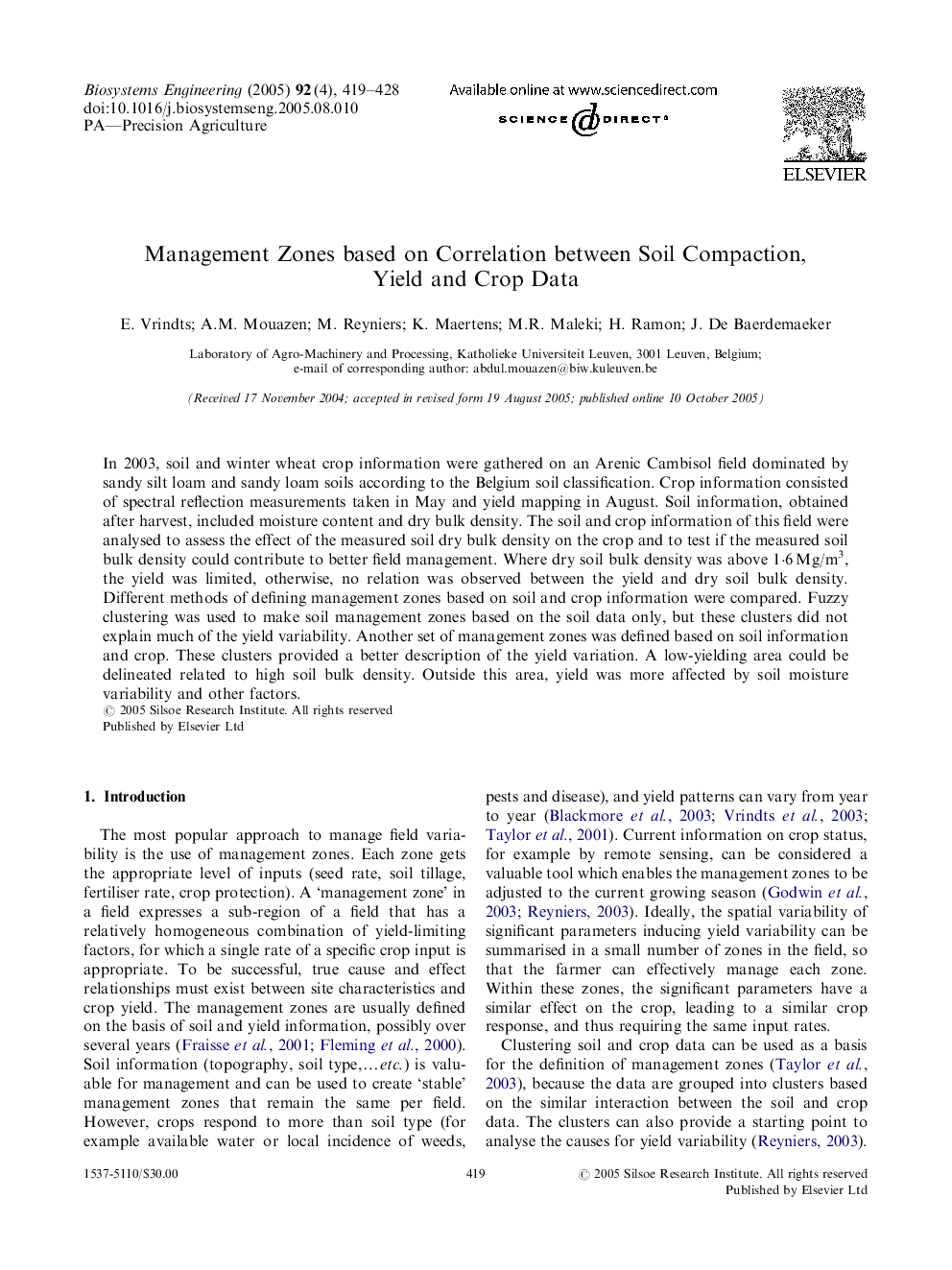| Article ID | Journal | Published Year | Pages | File Type |
|---|---|---|---|---|
| 10679795 | Biosystems Engineering | 2005 | 10 Pages |
Abstract
In 2003, soil and winter wheat crop information were gathered on an Arenic Cambisol field dominated by sandy silt loam and sandy loam soils according to the Belgium soil classification. Crop information consisted of spectral reflection measurements taken in May and yield mapping in August. Soil information, obtained after harvest, included moisture content and dry bulk density. The soil and crop information of this field were analysed to assess the effect of the measured soil dry bulk density on the crop and to test if the measured soil bulk density could contribute to better field management. Where dry soil bulk density was above 1·6 Mg/m3, the yield was limited, otherwise, no relation was observed between the yield and dry soil bulk density. Different methods of defining management zones based on soil and crop information were compared. Fuzzy clustering was used to make soil management zones based on the soil data only, but these clusters did not explain much of the yield variability. Another set of management zones was defined based on soil information and crop. These clusters provided a better description of the yield variation. A low-yielding area could be delineated related to high soil bulk density. Outside this area, yield was more affected by soil moisture variability and other factors.
Related Topics
Physical Sciences and Engineering
Engineering
Control and Systems Engineering
Authors
E. Vrindts, A.M. Mouazen, M. Reyniers, K. Maertens, M.R. Maleki, H. Ramon, J. De Baerdemaeker,
